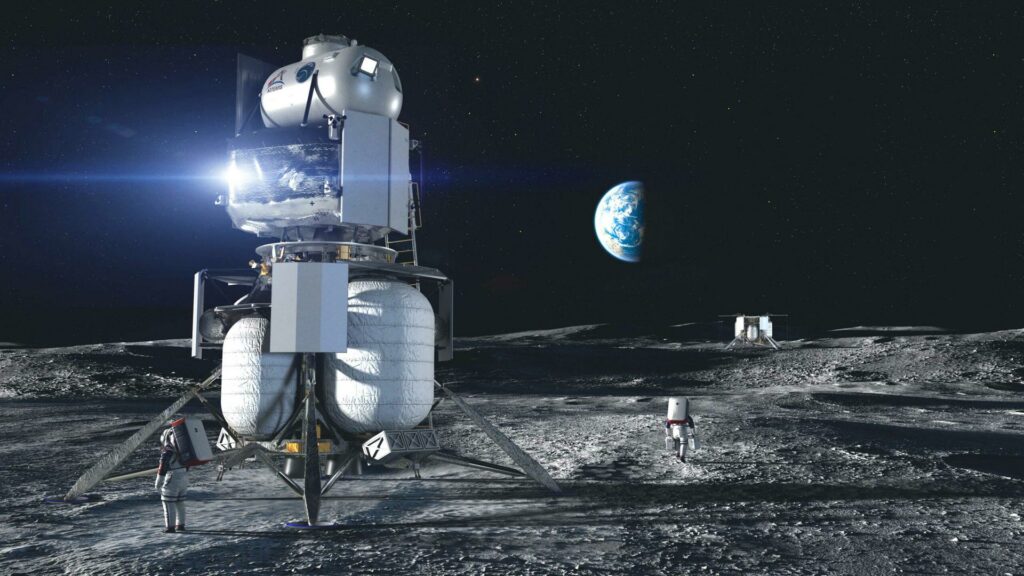The “national team” led by Blue Origin (it also includes Lockheed Martin, Draper, Boeing, Astrobotic and Honeybee Robotics) has applied for participation in the competition under the SLD (Sustaining Lunar Development) program. Its winner will receive a contract for the construction of a second lunar lander for the needs of the Artemis program.
The National Team has submitted its proposal for NASA’s SLD program to help the US establish a sustained lunar presence. The National Team partners are @BlueOrigin, @LockheedMartin, @DraperLab, @Boeing, @Astrobotic, and @Honeybee_Ltd. https://t.co/SodVFBnPju pic.twitter.com/N2y5g8smTu
— Blue Origin (@blueorigin) December 6, 2022
A few years ago, NASA initiated the HLS (Human Landing Services) competition, the purpose of which was to create an apparatus for delivering people and cargo to the lunar surface. As a result, its winner was the SpaceX application. The company offered to use a modified version of its Starship spacecraft for these purposes.
However, not everyone agreed with this decision. Blue Origin, which also participated in the competition, initially protested NASA’s decision, and then appealed it in court. Its lawyers referred to the fact that the organization initially stated its desire to choose two winners, which led to the price offered by the company, which was much higher than the price of SpaceX. In turn, the aerospace administration argued its position by the fact that it had never given any legal guarantees to finance two contracts at once, and it had to limit itself to one contract due to lack of funds. As a result, the court rejected Blue Origin’s claim.

In 2022, the story was continued. NASA managed to enlist the financial support of the American Congress, which allowed them to return to the original approach. In September, a new competition was announced, the winner of which would receive a contract for the construction of an alternative lunar vehicle. For a long time it remained unknown whether Blue Origin was going to participate in the new competition. As a result, the company submitted the application on the last possible day.
At the moment, it is unknown who else is participating in the SDL competition and whether the new Blue Origin application is a repeat of the old one or whether the company has redesigned the design of its device. It is also worth noting that the winner of the competition will be eligible to apply for lunar expeditions starting with the Artemis V mission, which is tentatively scheduled for 2028. As for the Artemis III and Artemis IV missions, they are assigned to SpaceX. In turn, since Elon Musk’s company had already won the lunar contract, it had no right to participate in the new competition.
Follow us on Twitter to get the most interesting space news in time
https://twitter.com/ust_magazine

